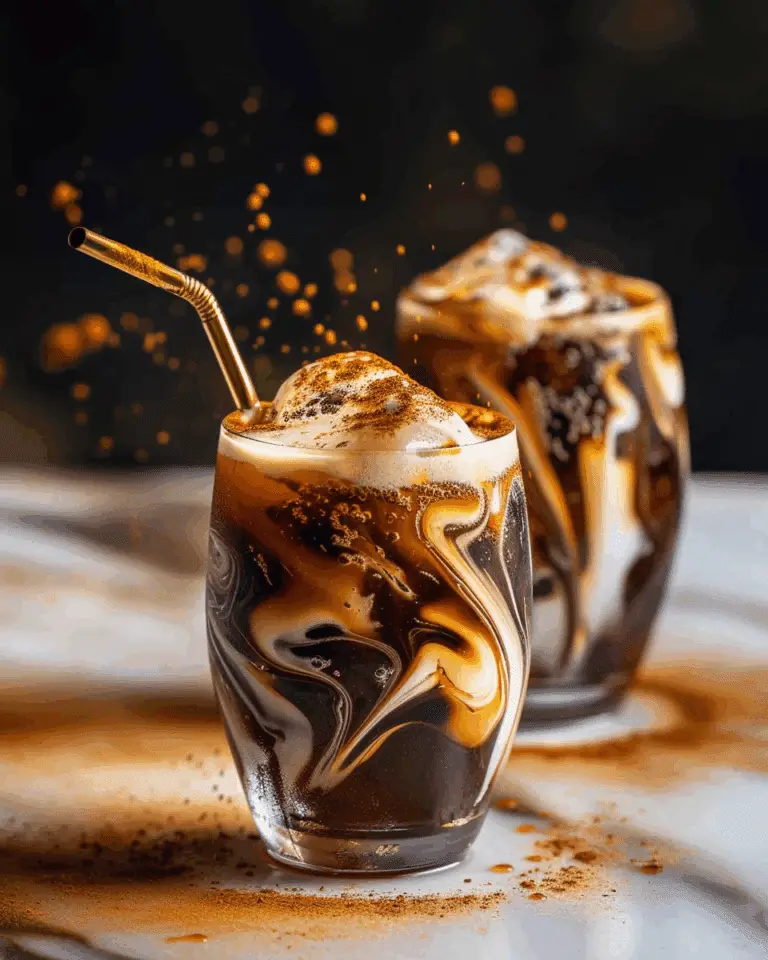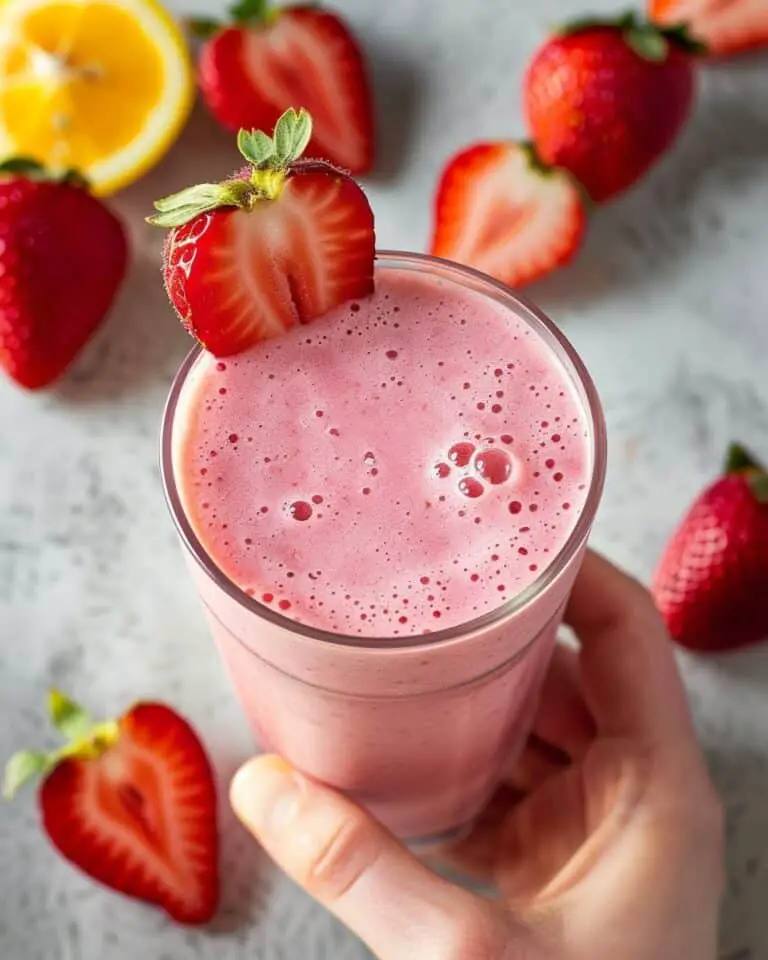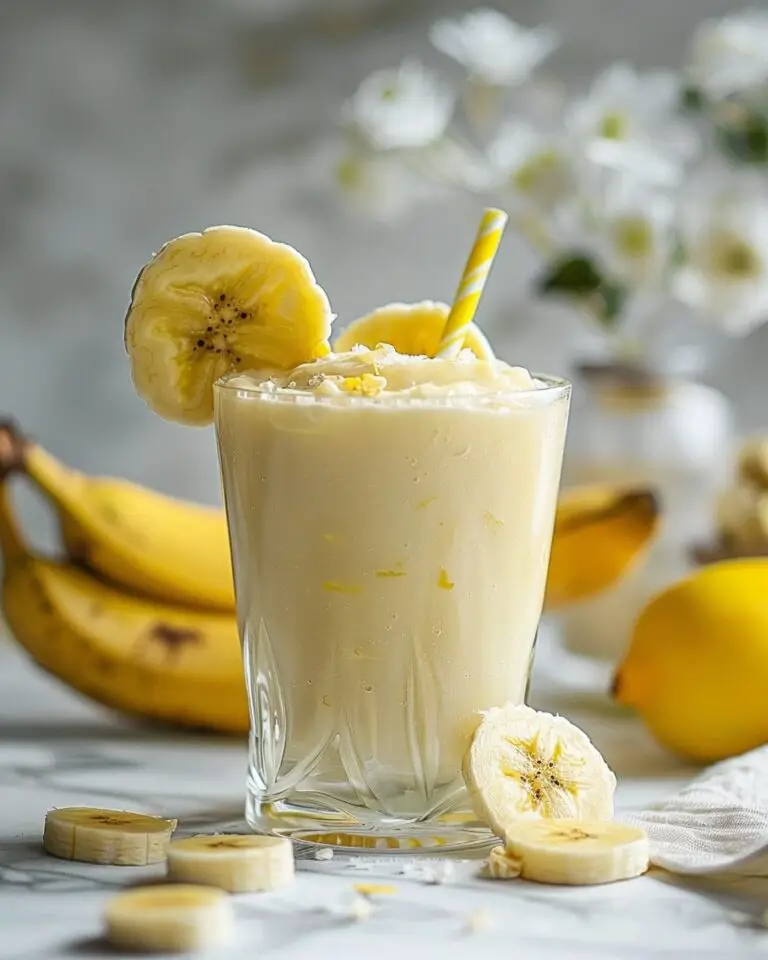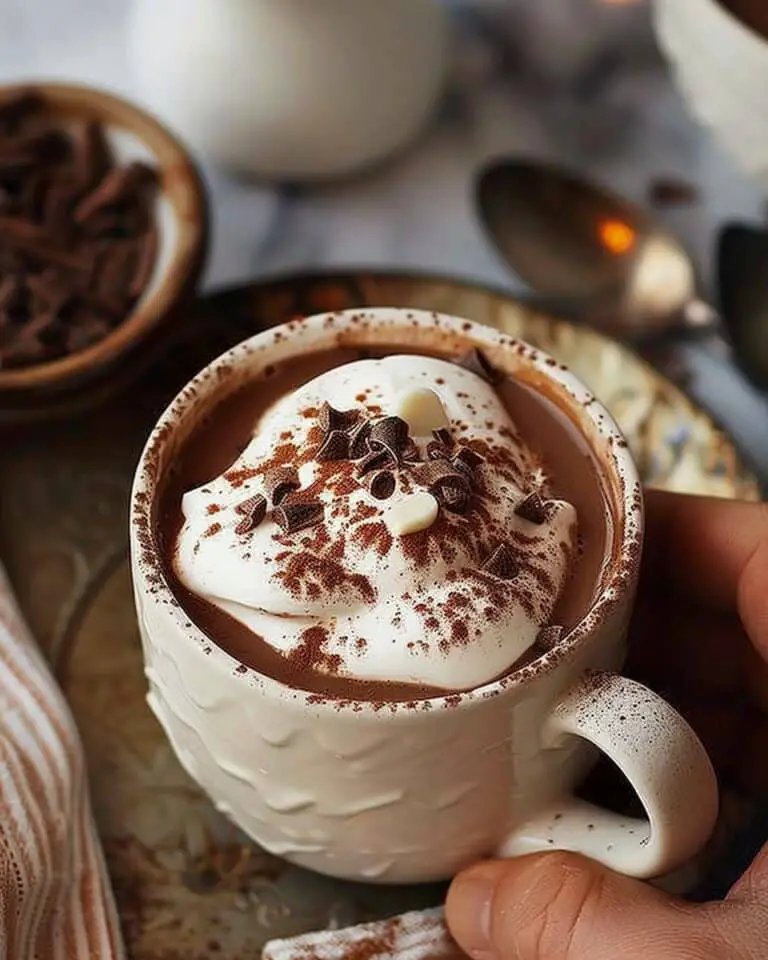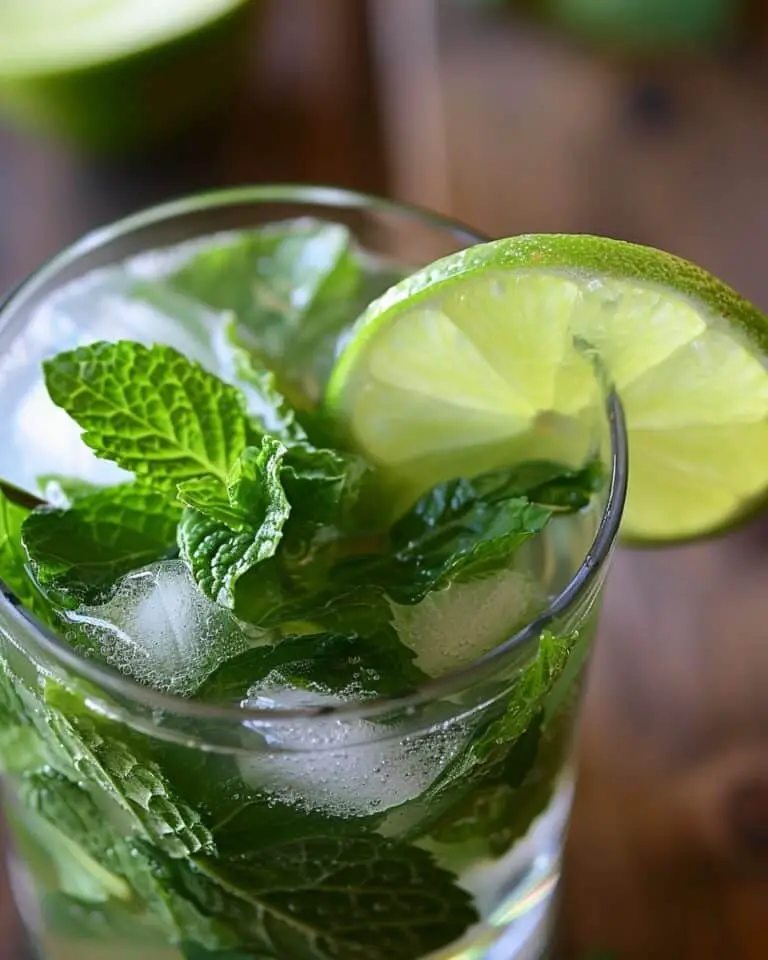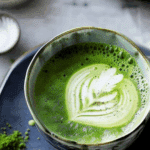Matcha is a vibrant green tea powder made from finely ground shade-grown leaves, traditionally used in Japanese tea ceremonies. When whisked with hot water or milk, it becomes a smooth, earthy drink that’s energizing and full of antioxidants.
Why I Love This Recipe
I love matcha for its clean, focused energy—it gives me a gentle boost without the crash of coffee. The taste is earthy and rich, and I can make it as simple or as creamy as I want. Whether I drink it plain or as a latte, it always feels like a mindful ritual.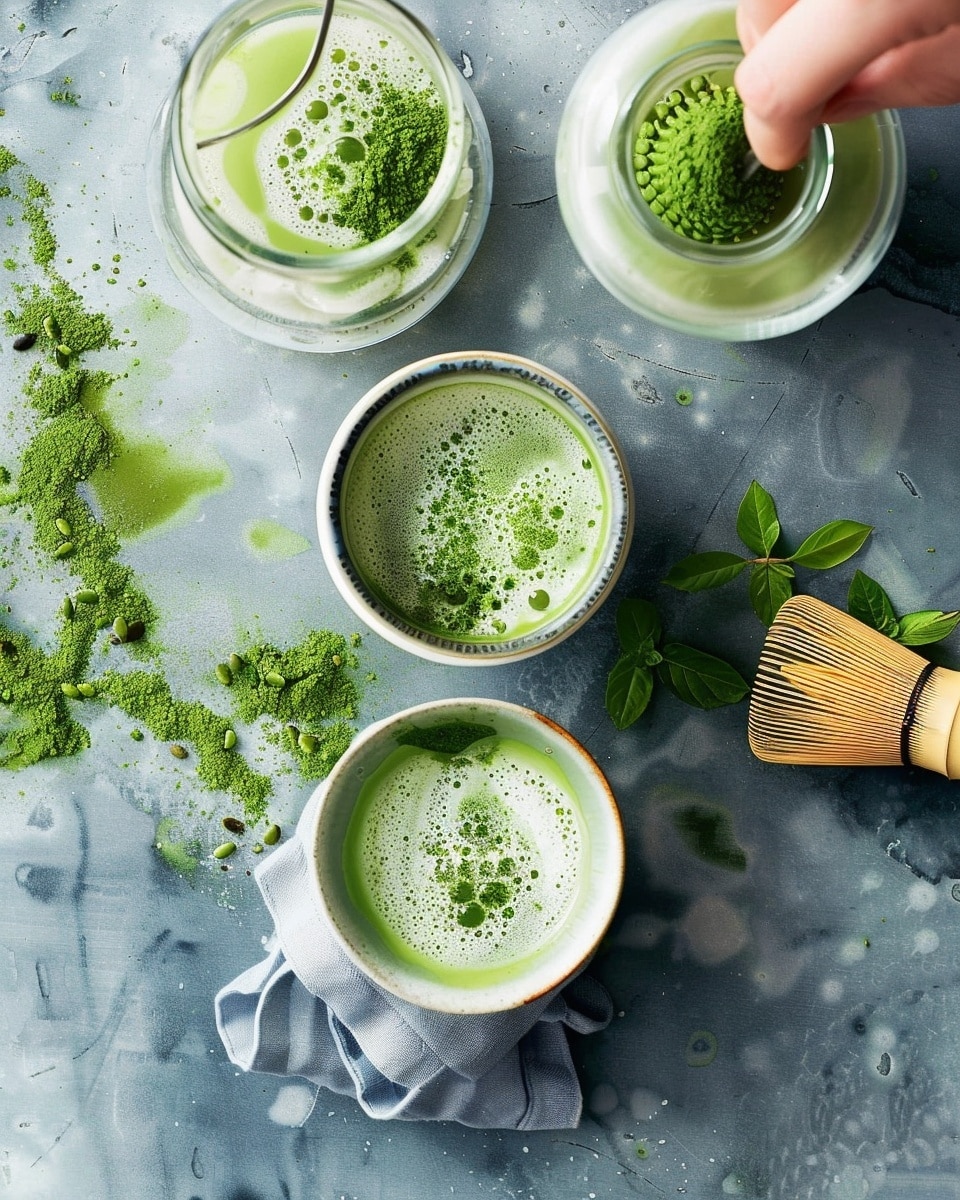
Ingredients
(Here’s a tip: Check out the full list of ingredients and measurements in the recipe card below.)
-
Matcha green tea powder (ceremonial or culinary grade)
-
Hot water (not boiling, about 75–80°C / 170–175°F)
-
Milk (optional, for a matcha latte)
-
Sweetener (optional: honey, maple syrup, or sugar)
-
Ice (optional for iced matcha)
Directions
-
I sift the matcha powder into a small bowl to prevent clumps.
-
I add a small amount of hot water and use a bamboo whisk (chasen) or milk frother to whisk until smooth and frothy.
-
For plain matcha, I add more hot water to dilute to taste.
-
For a latte, I steam or froth milk and pour it over the whisked matcha.
-
I add sweetener if I want a little extra smoothness.
-
For iced matcha, I pour the finished drink over ice and stir well.
Servings and timing
This recipe makes 1 serving and takes about 5 minutes to prepare.
Variations
-
I make a matcha latte with oat, almond, or soy milk when I want something creamier.
-
I add vanilla or cinnamon for a warm twist.
-
I blend matcha with cold milk and ice for a chilled, frothy iced latte.
-
I use culinary-grade matcha in smoothies or baking for a pop of green flavor.
Storage/Reheating
Matcha is best enjoyed fresh. I don’t usually store it once prepared, as it can separate and lose its froth. If I need to prep ahead, I keep it in the fridge for a few hours and shake or stir well before drinking. I don’t reheat it to preserve the flavor.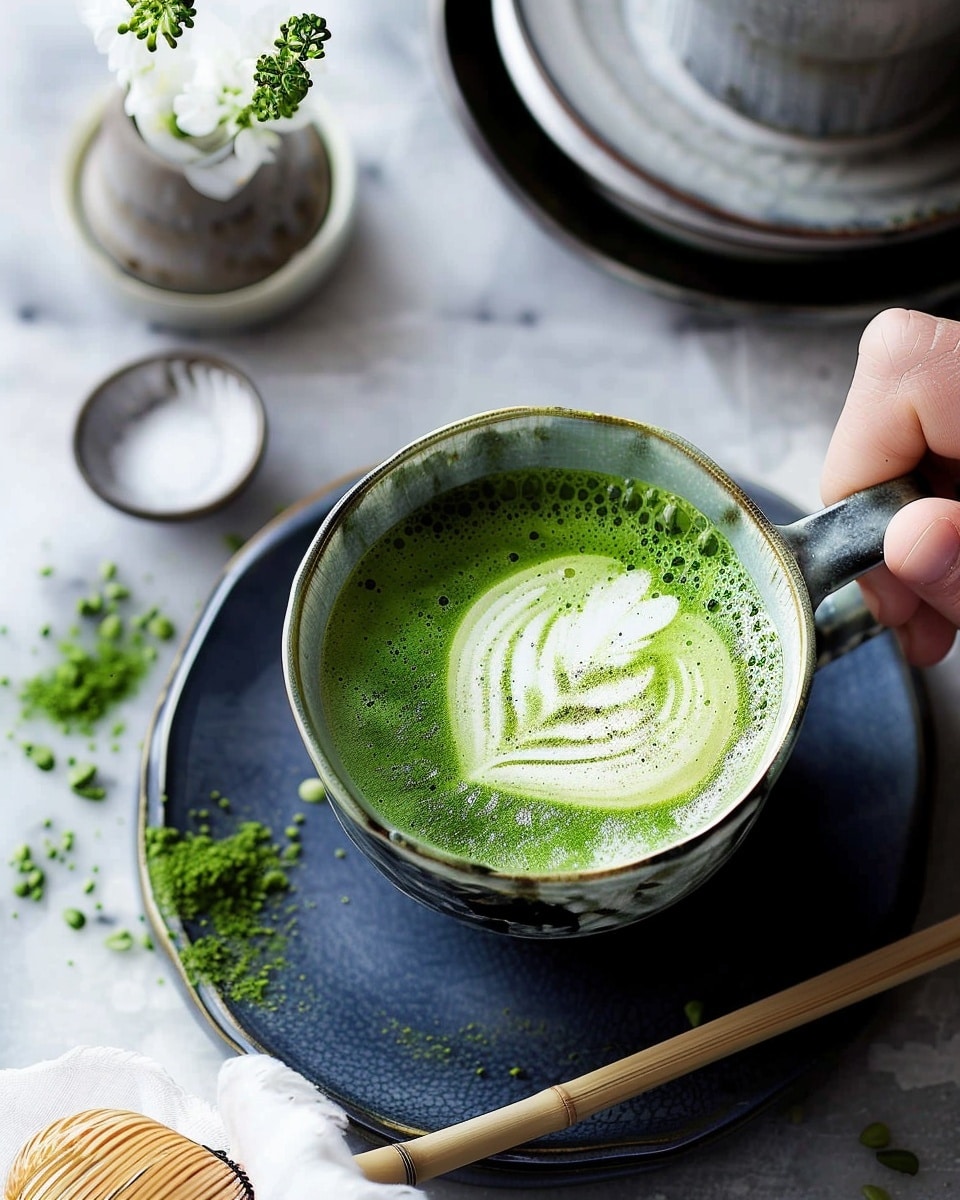
FAQs
What’s the difference between ceremonial and culinary matcha?
Ceremonial grade is smoother and better for drinking straight. Culinary grade is more bitter and suited for lattes or baking.
Can I use boiling water?
I avoid boiling water because it makes the matcha bitter. I use water around 75–80°C (170–175°F) instead.
How do I prevent matcha from clumping?
I always sift the matcha before whisking and use a small amount of water to create a paste first.
Is matcha high in caffeine?
Yes, matcha contains caffeine but gives a calmer, longer-lasting energy compared to coffee.
Can I make matcha without a whisk?
Yes, I use a milk frother or even shake it in a jar with water when I don’t have a whisk.
Conclusion
Matcha is my go-to when I want a peaceful, energizing drink that’s full of flavor and health benefits. Whether I enjoy it hot, iced, plain, or as a latte, it’s a quick and rewarding way to slow down and recharge.
Print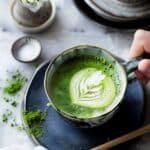
Matcha
- Prep Time: 5 minutes
- Cook Time: 0 minutes
- Total Time: 5 minutes
- Yield: 1 serving
- Category: Beverage
- Method: Whisked
- Cuisine: Japanese
- Diet: Vegan
Description
Matcha is a finely ground green tea powder traditionally used in Japanese tea ceremonies. When whisked with hot water or milk, it becomes a vibrant, earthy drink known for its clean energy and rich antioxidants.
Ingredients
- 1 teaspoon matcha green tea powder (ceremonial or culinary grade)
- 2 ounces hot water (75–80°C / 170–175°F)
- 6 ounces milk (optional, for a latte)
- 1–2 teaspoons sweetener (optional: honey, maple syrup, or sugar)
- Ice (optional, for iced matcha)
Instructions
- Sift the matcha powder into a bowl or mug to prevent clumps.
- Add hot water and whisk with a bamboo whisk or frother until smooth and frothy.
- For plain matcha, add more hot water to dilute as desired.
- For a latte, steam or froth the milk and pour it over the whisked matcha.
- Sweeten to taste if desired.
- For iced matcha, pour over a glass of ice and stir well.
Notes
- Use ceremonial grade for drinking straight; culinary grade works better in lattes or baking.
- Do not use boiling water—cool it slightly to preserve flavor and prevent bitterness.
- Sift matcha to avoid clumping and ensure a smooth texture.
- Matcha is best consumed fresh but can be stored in the fridge for a few hours if needed.
- Frothers or shaking in a jar can replace a traditional whisk.
Nutrition
- Serving Size: 1 cup
- Calories: 30
- Sugar: 1g
- Sodium: 5mg
- Fat: 0g
- Saturated Fat: 0g
- Unsaturated Fat: 0g
- Trans Fat: 0g
- Carbohydrates: 4g
- Fiber: 1g
- Protein: 1g
- Cholesterol: 0mg


